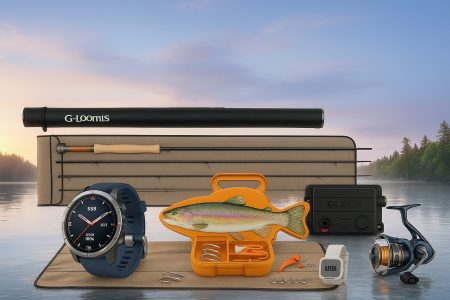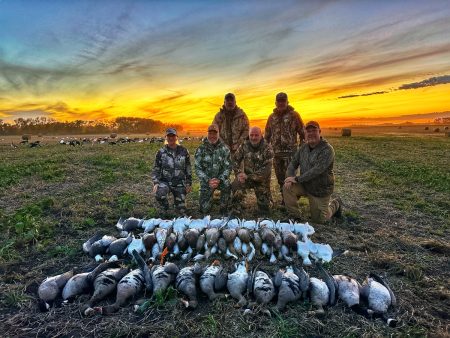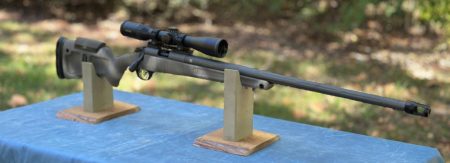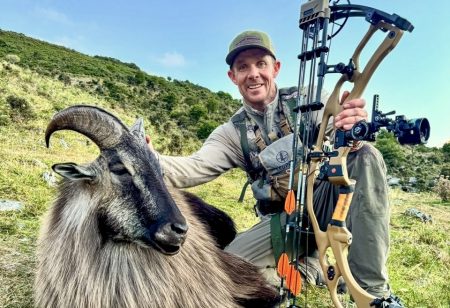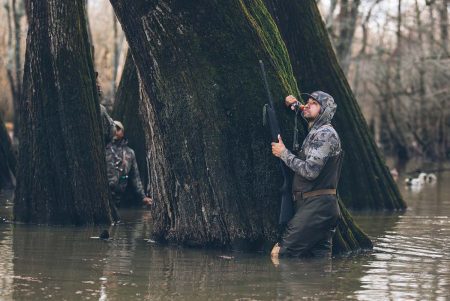We tiptoed down the edge of a large agricultural field and cut across a row of cut stalks to get to the edge of the trees on the other side. A portable blind was popped open and was quickly disguised in the jungle foliage. After adjusting the chair to see out the open window, my guide went out with clippers and cut shooting lanes through the limbs and vines. Sitting quietly, I could feel a bead of sweat run down the entire length of my back.
It was late afternoon on my first day in turkey camp. The hunting adventure was not a standard turkey operation, but one in the Yucatan jungle of Mexico. Our quarry was the ocellated turkey, a jungle bird you will find from the Yucatan to Belize. It is a unique bird that avid turkey hunters pursue as part of the World Slam. Understanding what constitutes different slams is crucial if you want to hunt all the turkey species in North America.
The Grand Slam is achieved through the National Wild Turkey Federation, where hunters must harvest and register one of each of the four most common subspecies. The four subspecies are the eastern, Merriam’s, Osceola, and Rio Grande wild turkeys.
A Royal Slam, recognized by most turkey hunters, is a registered Grand Slam plus the Gould’s wild turkey subspecies. Arizona hunters can hunt Gould’s, but most are taken in northwestern Mexico.
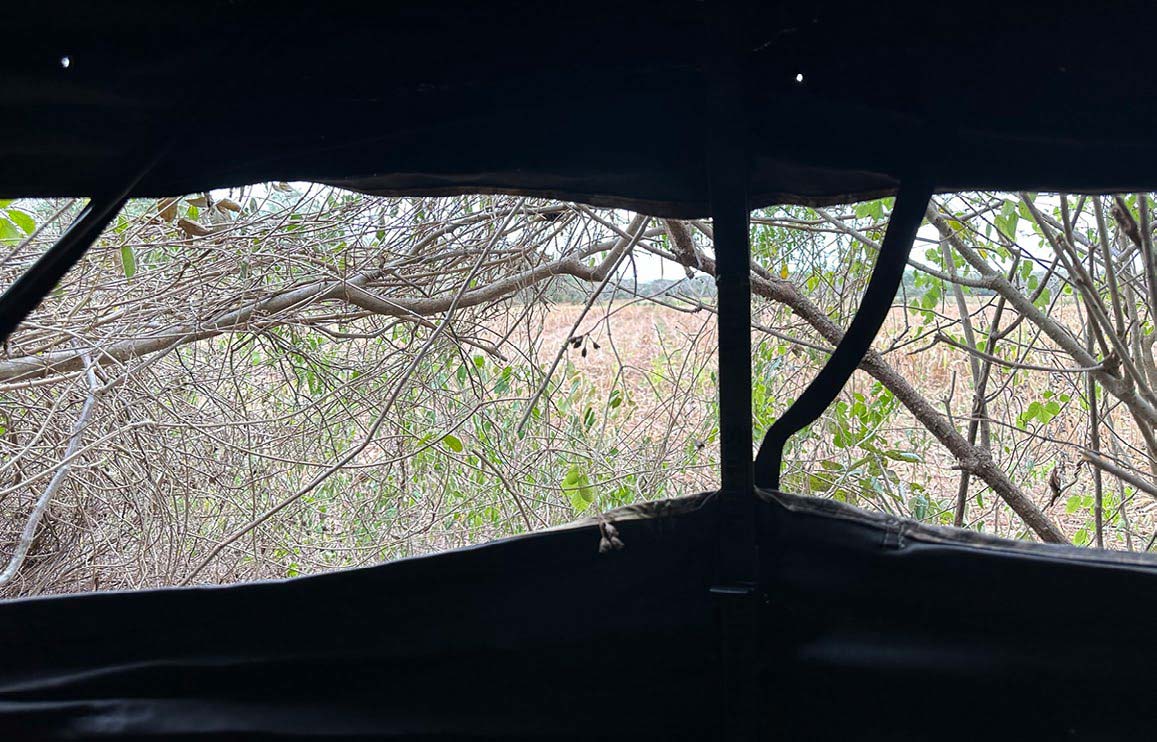
The World Slam
A World Slam is achieved by completing the Royal Slam plus the ocellated turkey. The latter species is only present in the Yucatan region of southern Mexico. The ocellated hunt requires careful planning, but it is achievable. Mexico’s Yucatan Peninsula has a growing agricultural base, with birds adapting to the high-protein food sources.
The temperatures seemed on par with what to expect in the jungle. However, the locals told me a big cold front was keeping the temperatures below 100°F. With temperatures soaring in the 90s, I embraced the relatively cooler temperatures.
My guide, Marcus, did not speak English, and we communicated with hand signals. Our blind was in the trees and completely concealed. The turkeys do not like the open fields and will come out to feed but are anxious to get back into cover.
Turkeys that make up a Grand Slam often use fields and will travel the length of an agricultural crop, but not the ocellated variety. Guides spend as much time as possible spotting. Spotters set up to watch the big fields, locate birds on the edges and pinpoint tracks and droppings for where to return to hunt the area. A blind is constructed or put in place with the hopes that the birds will return. Morning and evening are prime time, and the colorful birds work into the open and feed on the edge of the field without moving far.
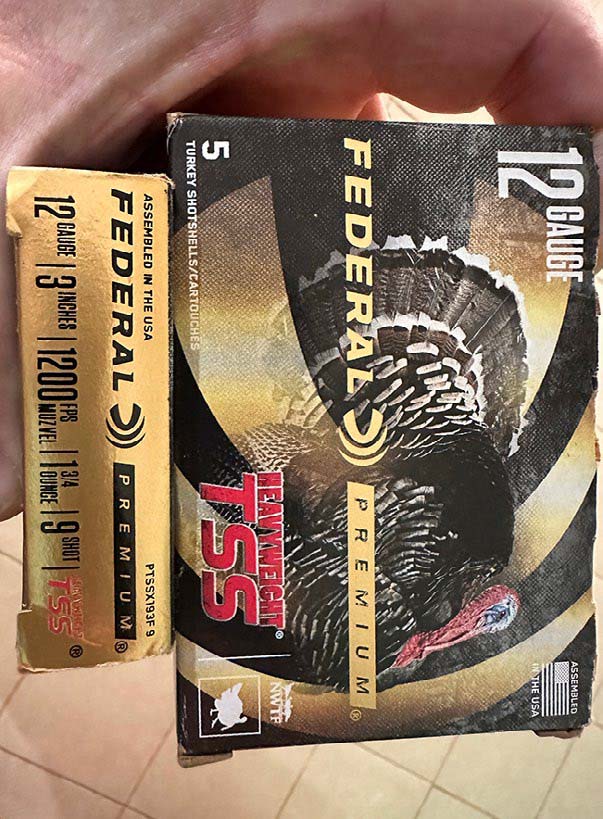
And Another Day
We hunted until dark, and Marcus went to the end of the field to listen for birds. We snuck back to our rendezvous location and drove back to camp. The following day, we were back in the same place, watching the edge of the crop for a colorful blue bird to appear. It was a cool morning, and the locals wore warm jackets and hats. Meanwhile, I found the cold front temperatures still on the tropical side.
Regulated hunting starts in early February when the birds need to be patterned for a successful hunt. The breeding season runs from the middle of March into May, and the birds call during this time. The spurs on an ocellated turkey are huge, and the fact that they have significant fighting equipment means confrontations are rare. A fight would likely mean death to one of the combatants.
We hunted until the sun was beating down on the field. Marcus felt we wouldn’t see anything under the midday heating period. We exited and looked for fresh tracks as we returned to our ride. The birds spotted in the corner of the field had changed feeding locations or knew hunters had set up. The ocellated turkey is keenly aware of its surroundings and will notice a blind if it is not well concealed. Marcus had hauled the blind and chairs out and talked with another guide about another field. We stopped on the way back to camp and set up the blind where several birds had been spotted feeding that morning. There were tracks and droppings over a 40-yard area on the edge of the field. The blind was positioned beside a trail inside the forest edge.
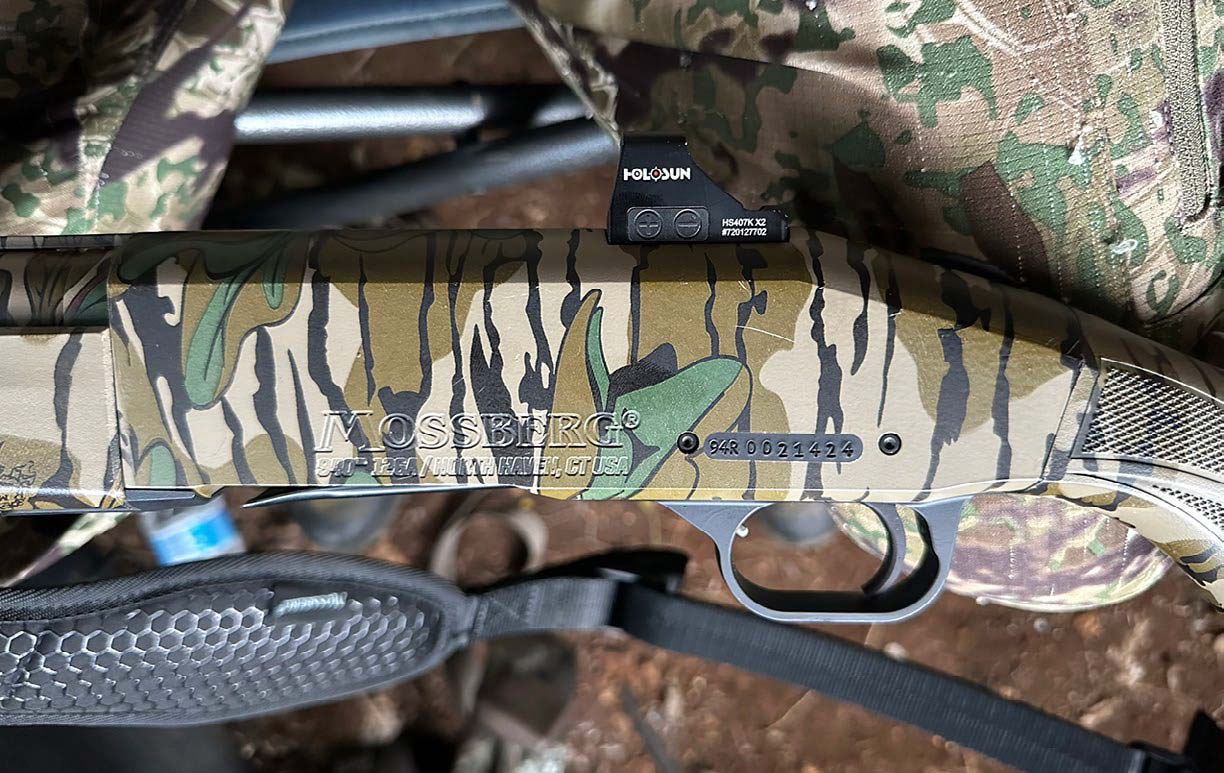
Rest and Evening Hunt
Back at camp, we had a wonderful lunch and rested in the hammocks where we could catch the breeze. The guides said to be ready for 3 p.m. to get to the blinds for an evening hunt. Marcus and I were back on the trail and soon settled into our chairs until dark. There was lots of bird activity in the form of doves and other songbirds, but we saw no turkeys.
We were back in the blind well before sunrise the following day. Sunrise brought a soothing warmth that took the chill out of the air. The windows were open to watch the edge of the field and hopefully spot any bird before it was aware of us. Some of the other hunters in camp had birds show up three or four feet from the blind, requiring a quick reaction with a small shot pattern.
We had been sitting for two hours but still had a shadow on the edge of the field. I was looking west when Marcus rummaged through his pack, pulled out binoculars, and looked down the edge of the field to the east. Then he called, “Pavo, macho!” The words were music to my ears. We finally saw a turkey, and it was a mature male. Marcus flew into action, pulling windows closed behind us and situating shooting sticks at the open window to prepare for a shot.
A second turkey appeared in the same area, and the two fed quickly about 70 yards from the blind. The birds were challenging to distinguish in the shadows and looked black and blended with the field. I watched intently, hoping the birds would work down the edge of the field and into range. Unfortunately, they were moving in the opposite direction I was hoping they would. A hawk landed in the field about 30 yards from the turkeys. The most dominant turkey took offense to the visitor and charged it, forcing it to fly. That brought the turkey in my direction, and I watched it slowly work back to the forest edge when the hawk returned. The turkey charged the avian predator again, sending it skyward. The turkey ran out of the sun and into the shadows, disappearing.

A minute or more transpired, and I still could not see the turkey. The second one was feeding in the same location. I worried the bird had slipped back into the cover of the jungle. I had carefully aimed my Mossberg 940 Pro Turkey shotgun out the window and caught Marcus peering over my shoulder. Seconds later, Marcus tapped me to get ready, and without warning, the bird rounded the edge of the trees, stopping about four yards from the blind.
“Macho” meant shoot, and with the Holosun red dot carefully pointed at the neck of the bird, I squeezed the trigger. The bird flew backward with the impact of the Federal TSS shot, and feathers floated softly on the breeze. I had successfully harvested my ocellated turkey. It had been a three-day waiting game, but it had been worth every second.
Stunning Bird
The bird was so stunning that I could not help but sit and stare at its iridescent colors and patterns. The blue head and yellow crown are unique. The ocellated turkey does not have a beard but makes up for it with long fighting spurs. The birds weigh about 10 pounds, making them a diminutive cousin to the other turkey species in North America.
Back at camp, the bird was weighed and its spur length recorded. At 10½ pounds and with spurs measuring 1 5/8 inches, I was thrilled with my pavo macho. The bird was skinned out and frozen for transport home.
A successful ocellated turkey hunt means I am one turkey away from a World Slam. If I can return to northwest Mexico for a Gould’s turkey, I will have shot all species the standing requires.
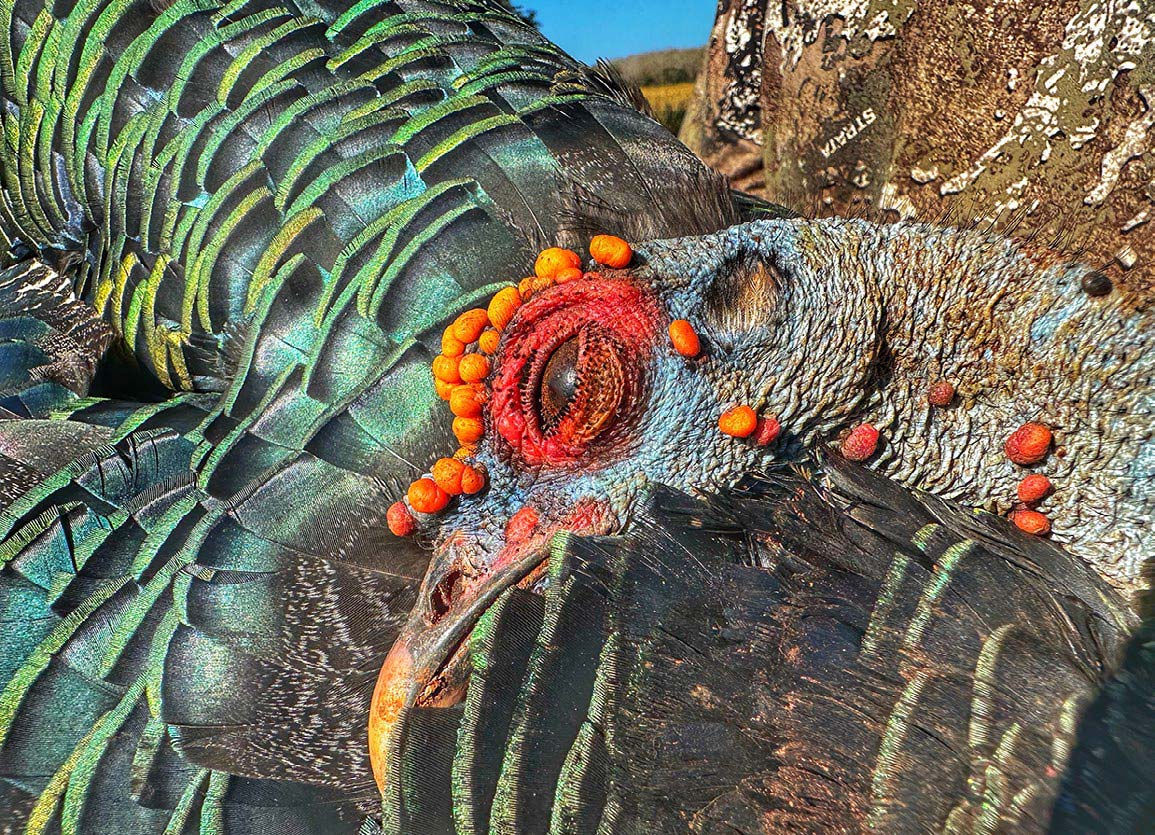
Tall Tine Outfitters
Make sure to use the services of an outfitter that takes care of all details. We booked our hunt with Ted Jaycox of Tall Tine Outfitters. Ted handles everything and advises what to pack and how to avoid issues.
Transportation was arranged for the three-hour drive from the city we flew into to camp. Our English-speaking driver was a wealth of information regarding the history, towns, people, agriculture and ancient Mayan civilization. We had all the paperwork to take guns and ammunition. CITES and agriculture permits were generated for transporting birds back to a USDA-approved taxidermist.
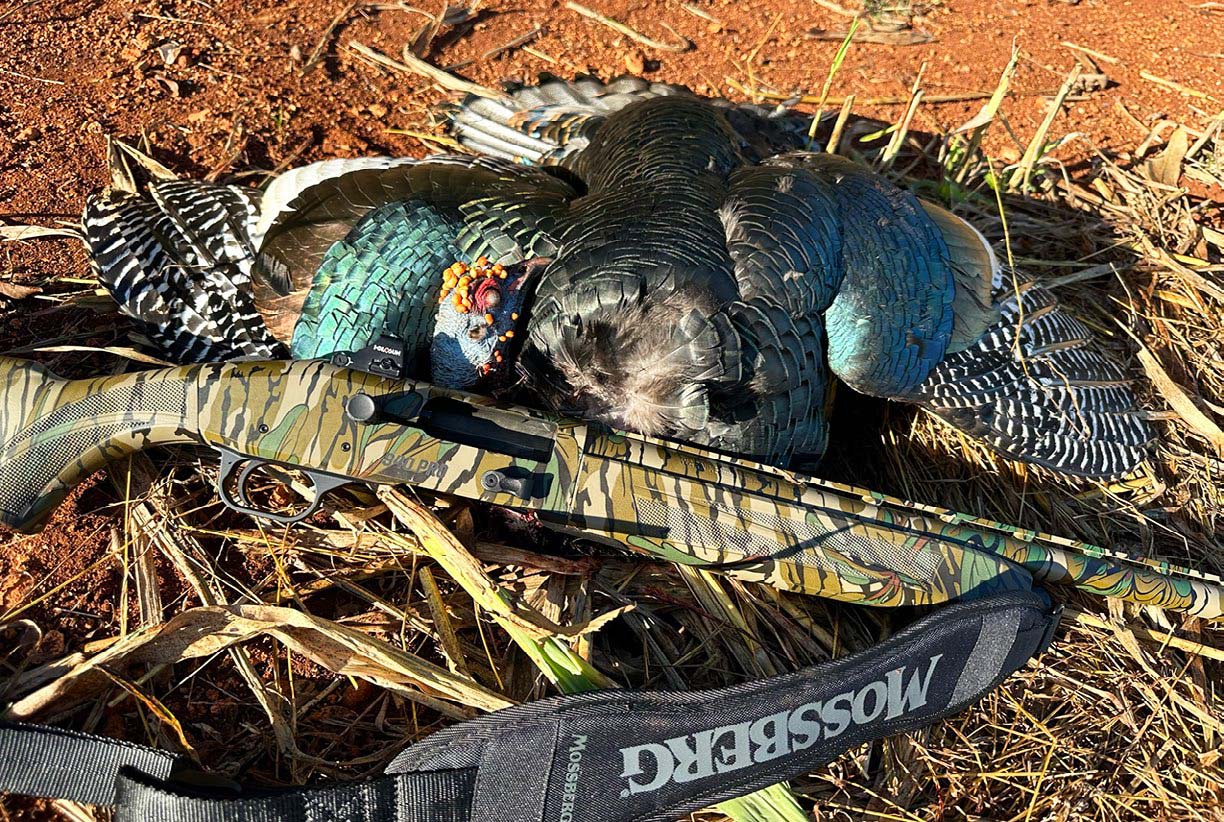
Mossberg 940 Pro Turkey Shotgun
The 940 Pro Turkey shotgun drop and cast are adjustable, and the length-of-pull is 13 to 14.25 inches. The customized fit and feel with a new barrel-making process helps shooters maintain point-of-aim and impact.
The 940 series of shotguns saw Mossberg team up with legendary competitive shooters Jerry and Lena Miculek. The initial launch was in 2020 with a 12-gauge autoloading shotgun for competitive shooters, the 940 JM Pro. Mossberg knew the shotgun was a winner and transferred the technology of a competitive-style platform to one that could benefit hunters. The 940 Pro Waterfowl and the 940 Pro Snow Goose were successful and led to the perfect turkey shotgun.
The 940 Pro Turkey is optic-ready and has a drilled and tapped receiver. However, it also has a HIVIZ CompSight fiber optic sight. The entire 940 Pro line uses a clean-running gas-vent system. Hunters will appreciate the quick-empty magazine release. The shotgun has an adjustable length of pull, drop at comb/cast and self-draining stock.
Adjustable, managed recoil and accessorized for successful turkey hunting make this shotgun a natural choice. It is decorated in Mossy Oak Greenleaf and has an X-Factor XX-Full Tky Tube, with the choice of an 18.5-inch or 24-inch barrel.
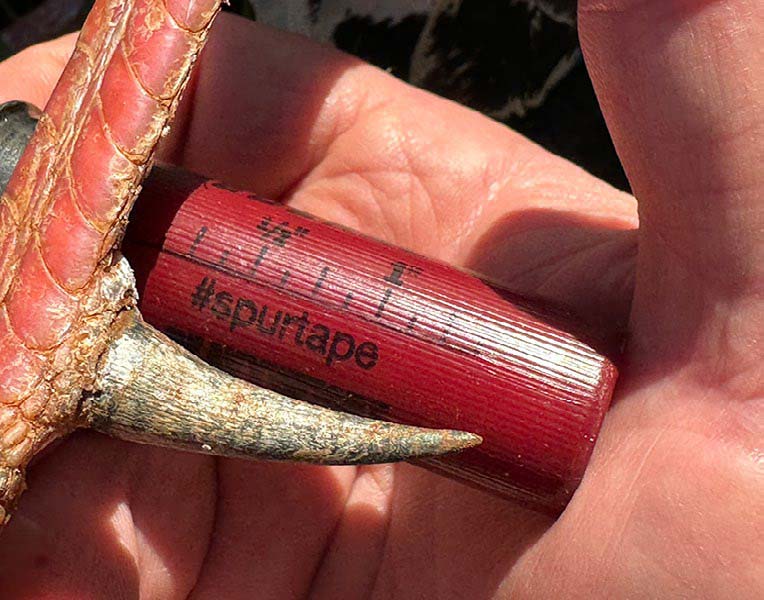
Holosun HE507K-GR X2
The 940 Pro Turkey shotgun can be packaged with a Holosun HE507K-GR X2 open reflex optic, containing a green or optional red reticle and easy-to-use controls. Turkey hunters are not always in a comfortable shooting position when a shot opportunity arises. Being on target when you can see the red or green dot is vital to success. The sight has Lock Mode, preventing the buttons from accidentally getting changed. Additional features include Holosun’s Super Green LED with up to 50k hours of battery life, Multi-Reticle System, and Shake Awake.
Federal TSS
Do not leave anything to chance. A box of premium shotshells will be the least expensive part of a trip for ocellated turkey. Federal’s Heavyweight TSS (Tungsten Super Shot) load is available in the No. 9 or No. 7 shot. It contains more than double the amount of lead No. 5 pellets in an equal-weight load. The small tungsten alloy pellets have the same energy per pellet as the larger lead. The premium tungsten alloy weighs 18 gm/cc and is 56% denser than lead and 22% denser than regular tungsten. There are 635 pellets in a 3-inch load of No. 9 load, and Federal’s 3½ -inch Heavyweight TSS No. 9 load with a 2¼ ounce payload contains 814 pellets. The TSS pattern is dense and deadly, even at extended ranges, traveling at 1,200 fps. The shotshell comes printed with a ruler for measuring spurs.
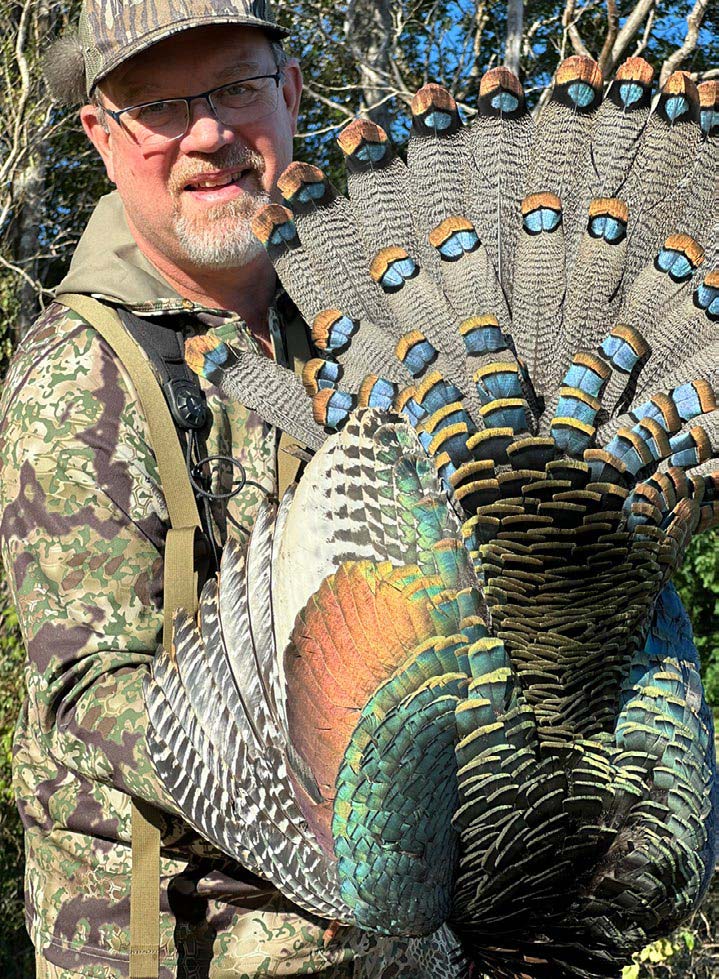
ALPS Ambush Sling Pack
Packing light for an international trip, the Ambush Sling Pack was ideal for taking everything I needed into the field daily. The lightweight design has one ambidextrous strap to sling over your shoulder. The single strap does not get in the way of a shotgun mounted on your shoulder. A MOLLE system on both sides of the pack allows the ThermaCELL pocket, or other accessories, to attach to either side of the sling. The Ambush Sling Pack weighs one pound empty, and there are multiple pockets to pack hunting gear. MSRP is $59.99.
Per our affiliate disclosure, we may earn revenue from the products available on this page. To learn more about how we test gear, click here.







